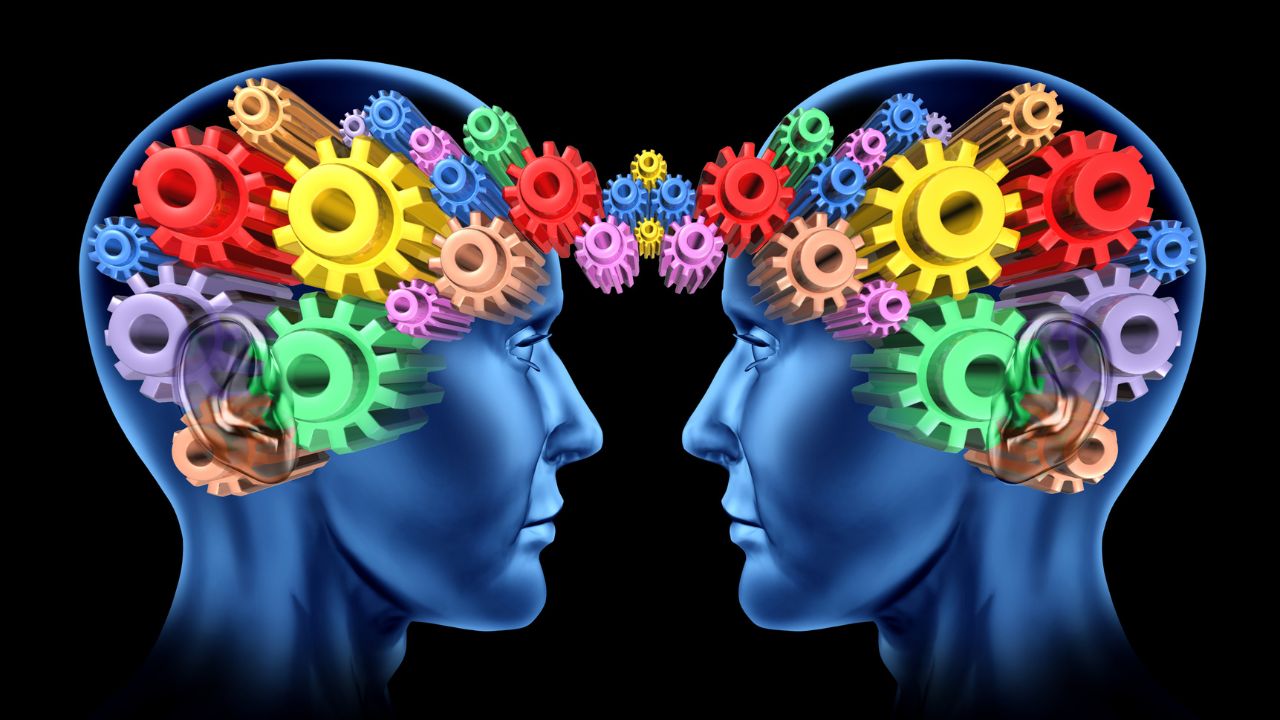- The Brain’s Wondrous Architecture
- The Brain in Action: Functions and Processes
- Unraveling the Mysteries: Ongoing Research
- The Future of Brain Research: Promise and Potential
- Conclusion
- Keywords:
- Key Takeaways:
- You Might Still Be Wondering about…
- How do different regions of the brain interact to produce complex behaviors and cognitive processes?
- How does the brain’s structure change throughout development, and how does it affect learning and cognition?
- What are the potential applications of brain-computer interfaces and neural implants?
- How do neurodegenerative diseases, such as Alzheimer’s and Parkinson’s, affect the brain, and what are the current approaches for their treatment?
- Can we unlock the secrets of consciousness through neuroscience?
- How do emotions influence decision-making processes in the brain?
- What are the factors that contribute to individual differences in cognitive abilities and intelligence?
- How does sleep impact brain function and memory consolidation?
- How can we utilize the concept of neuroplasticity for cognitive enhancement and neurorehabilitation?
- How do environmental factors, such as stress and lifestyle choices, influence brain health and function?
- Common Misconceptions:
- We only use 10% of our brain.
- People are either “left-brained” or “right-brained.”
- Brain damage is irreversible, and neurons cannot regenerate.
- The size of the brain determines intelligence.
- Playing brain-training games can significantly improve overall cognitive function.
- Memory works like a video recorder, storing exact replicas of past experiences.
- People are either right-brained (creative) or left-brained (analytical).
- Intelligence is solely determined by genetics.
- Brain size is directly correlated with a person’s intellectual capabilities.
- The brain is fully developed in adulthood, and learning becomes difficult.
The human brain, a marvel of biology, has long intrigued scientists and non-scientists alike. Despite significant advancements in neuroscience, the brain remains a complex enigma. This article embarks on an intriguing exploration of the human brain, unveiling its fascinating structures, functions, and the ongoing research that seeks to unravel its many mysteries.
The Brain’s Wondrous Architecture
The brain, comprised of approximately 86 billion neurons, is the command center for our entire nervous system. It’s typically divided into three main parts:
- The Cerebrum: The largest part of the brain, responsible for higher functions like thinking, learning, consciousness, and emotions. It’s divided into two hemispheres, each containing four lobes with distinct functions.
- The Cerebellum: Located at the back of the brain, the cerebellum coordinates and regulates muscular activity, maintaining balance and coordination.
- The Brainstem: The brainstem controls basic functions vital for survival, such as heart rate, breathing, and sleep cycles.
The Brain in Action: Functions and Processes
Understanding how the brain processes information, regulates bodily functions, and facilitates our interaction with the world is a monumental scientific challenge.
- Cognition: The brain processes information from our senses, enabling us to interact with our surroundings. Higher cognitive functions like problem-solving, decision-making, and creative thinking originate in the cerebral cortex.
- Emotion and Memory: The limbic system, encompassing structures like the amygdala and the hippocampus, plays a crucial role in emotion regulation and memory formation.
- Neuroplasticity: The brain’s ability to reorganize and form new neural connections throughout life is known as neuroplasticity. This remarkable capacity allows the brain to adapt to new experiences, learn new information, and recover from injuries.
Unraveling the Mysteries: Ongoing Research
Despite our understanding, the brain holds many mysteries that researchers are fervently trying to unravel.
- Consciousness: How does the brain give rise to consciousness, our sense of self, and our subjective experiences? This profound question lies at the heart of neuroscience, and while theories abound, we are still far from a definitive answer.
- Brain Disorders: Understanding the mechanisms behind neurodegenerative diseases like Alzheimer’s and Parkinson’s, mental disorders, and brain injuries remains a significant scientific challenge.
- The Connectome: Mapping the comprehensive network of connections in the brain, known as the “connectome,” is a colossal task. The Human Connectome Project, among others, aims to create a detailed map of the brain’s connectivity, which could revolutionize our understanding of how the brain functions.
The Future of Brain Research: Promise and Potential
The future of brain research promises exciting advancements, particularly with technologies like neuroimaging, brain-computer interfaces, and neural implants. Breakthroughs in these areas could offer unprecedented insights into the brain’s workings, transforming our understanding of everything from cognition and mental disorders to consciousness and the essence of our humanity.
Conclusion
The human brain, a realm of tantalizing mysteries, continues to captivate our collective curiosity. As we make strides in unraveling its enigmas, we draw closer to understanding not only the intricate mechanisms of thought, memory, and emotion, but also the very nature of our existence. As we look forward to a future replete with scientific advances, we remain humble in the face of the brain’s complexities, reminded of the profound mystery and wonder encapsulated within our cerebral frontier. The exploration of the brain stands as a testament to our relentless quest for knowledge, our audacious spirit of discovery, and our enduring fascination with the intricacies of the human experience.
Keywords:
- Neurons: Neurons are specialized cells in the brain and nervous system that transmit information through electrical and chemical signals.
- Cerebrum: The cerebrum is the largest part of the brain, responsible for higher cognitive functions such as thinking, learning, consciousness, and emotions.
- Cerebellum: The cerebellum is located at the back of the brain and is involved in coordinating and regulating muscular activity, balance, and coordination.
- Brainstem: The brainstem is the lower part of the brain that connects the cerebrum and the spinal cord. It controls basic functions necessary for survival, including heart rate, breathing, and sleep cycles.
- Cognition: Cognition refers to the mental processes involved in acquiring, processing, and using information. It encompasses various functions such as perception, attention, memory, problem-solving, and decision-making.
- Limbic system: The limbic system is a set of brain structures, including the amygdala and hippocampus, involved in emotions, memory formation, and regulation.
- Neuroplasticity: Neuroplasticity refers to the brain’s ability to reorganize and form new neural connections throughout life. It allows for learning, adaptation to new experiences, and recovery from injuries.
- Consciousness: Consciousness refers to our awareness of ourselves and the world around us. It involves subjective experiences, self-perception, and the ability to introspect.
- Connectome: The connectome is a comprehensive map of the neural connections in the brain. It represents the network of pathways that facilitate communication between different brain regions.
- Neurodegenerative diseases: Neurodegenerative diseases are conditions characterized by the progressive loss of structure or function of neurons in the brain. Examples include Alzheimer’s disease and Parkinson’s disease.
Key Takeaways:
- The human brain is a complex organ composed of billions of neurons that regulate the body’s functions and processes.
- It consists of the cerebrum, cerebellum, and brainstem, each with distinct functions.
- The brain is responsible for higher cognitive functions, emotions, memory, and the ability to adapt and learn.
- Ongoing research focuses on understanding consciousness, brain disorders, and mapping the brain’s connectivity.
- The future of brain research holds promise with advancements in neuroimaging, brain-computer interfaces, and neural implants.
You Might Still Be Wondering about…
How do different regions of the brain interact to produce complex behaviors and cognitive processes?
The brain is a highly interconnected organ, and different regions work together in neural networks to facilitate various functions. For example, the prefrontal cortex plays a role in decision-making, while the visual cortex processes visual information. Studying the patterns of activity and communication between brain regions helps unravel these interactions.
How does the brain’s structure change throughout development, and how does it affect learning and cognition?
The brain undergoes significant structural changes during development, including synaptic pruning and myelination. These changes influence learning, memory formation, and the development of cognitive abilities. Research focuses on understanding the mechanisms underlying these structural changes and their impact on cognitive processes.
What are the potential applications of brain-computer interfaces and neural implants?
Brain-computer interfaces and neural implants hold promise for various applications. They could help individuals with disabilities regain mobility or communicate, enhance cognitive abilities, and provide insights into the functioning of the brain. However, ethical considerations and potential risks need to be carefully addressed.
How do neurodegenerative diseases, such as Alzheimer’s and Parkinson’s, affect the brain, and what are the current approaches for their treatment?
Neurodegenerative diseases involve the progressive loss of neurons and often result in cognitive decline and motor impairments. Understanding the underlying mechanisms, such as protein misfolding and accumulation, is crucial for developing effective treatments. Current approaches include medications, lifestyle interventions, and emerging therapies targeting specific disease mechanisms.
Can we unlock the secrets of consciousness through neuroscience?
The nature of consciousness and its neural basis remains a profound mystery. While neuroscience has made significant progress in understanding brain activity related to conscious states, the exact mechanisms giving rise to subjective experiences are still not fully understood. Studying brain activity patterns, connectivity, and integrating insights from philosophy and psychology contribute to our understanding of consciousness.
How do emotions influence decision-making processes in the brain?
Emotions play a significant role in decision-making processes. Research shows that emotional processing in the amygdala and other limbic system structures can impact the evaluation of options and biases in decision-making. Understanding the neural mechanisms behind emotion-cognition interactions can provide insights into human behavior and inform fields like psychology and economics.
What are the factors that contribute to individual differences in cognitive abilities and intelligence?
Cognitive abilities and intelligence are influenced by a combination of genetic and environmental factors. Genetic variations, brain structure and connectivity, educational experiences, and socio-cultural influences all contribute to individual differences in cognitive abilities. Research aims to uncover the complex interplay of these factors and their impact on cognitive functioning.
How does sleep impact brain function and memory consolidation?
Sleep plays a vital role in brain function and memory consolidation. During sleep, the brain undergoes processes that support memory formation and consolidation. Research explores the specific mechanisms involved, such as synaptic plasticity and the clearance of metabolic waste products, to understand the relationship between sleep and brain health.
How can we utilize the concept of neuroplasticity for cognitive enhancement and neurorehabilitation?
Neuroplasticity offers potential avenues for cognitive enhancement and neurorehabilitation. By understanding the mechanisms underlying neuroplasticity, researchers aim to develop interventions and techniques that promote brain plasticity for therapeutic purposes. These interventions may aid in enhancing cognitive abilities, recovering from brain injuries, and improving overall brain health.
How do environmental factors, such as stress and lifestyle choices, influence brain health and function?
Environmental factors can significantly impact brain health and function. Chronic stress, for example, can affect neural connectivity and contribute to mental health disorders. Lifestyle choices, such as physical exercise, healthy diet, and intellectual stimulation, can positively influence brain function and protect against cognitive decline. Understanding the relationship between the environment and the brain is crucial for promoting brain health.
Common Misconceptions:
We only use 10% of our brain.
Reality: This is a popular myth. In reality, the brain is a highly efficient organ, and different regions are constantly active and interconnected, even during rest.
People are either “left-brained” or “right-brained.”
Reality: While certain brain functions may be more lateralized to one hemisphere, the brain operates as an integrated whole. Both hemispheres collaborate for most tasks, and individual differences are more nuanced than a strict left-right division.
Brain damage is irreversible, and neurons cannot regenerate.
Reality: While severe brain damage can lead to permanent loss of function, the brain has some capacity for regeneration and rewiring. Neuroplasticity allows for the formation of new connections and recovery from certain injuries.
The size of the brain determines intelligence.
Reality: Brain size alone is not a direct indicator of intelligence. Factors such as neural connectivity, organization, and efficient functioning are crucial for cognitive abilities.
Playing brain-training games can significantly improve overall cognitive function.
Reality: While brain-training games may improve performance on specific tasks, their transferability to broader cognitive abilities and real-life situations is still debated among researchers.
Memory works like a video recorder, storing exact replicas of past experiences.
Reality: Memory is a complex and reconstructive process. It is susceptible to biases, distortions, and forgetting over time, making it less like a perfect recording and more like a creative interpretation of past events.
People are either right-brained (creative) or left-brained (analytical).
Reality: While certain brain functions may be more dominant in one hemisphere, both hemispheres contribute to creativity and analytical thinking. Creativity involves widespread brain networks.
Intelligence is solely determined by genetics.
Reality: Intelligence is influenced by a combination of genetic and environmental factors. Environmental factors, including education, experiences, and opportunities, significantly contribute to cognitive abilities.
Brain size is directly correlated with a person’s intellectual capabilities.
Reality: Brain size is not the sole determinant of intelligence. Factors such as neural connectivity, efficiency, and overall brain structure play essential roles in cognitive abilities.
The brain is fully developed in adulthood, and learning becomes difficult.
Reality: While the brain reaches its structural maturity in early adulthood, it remains capable of learning and adapting throughout life. Neuroplasticity allows for the formation of new neural connections and ongoing cognitive development.










0 Comments